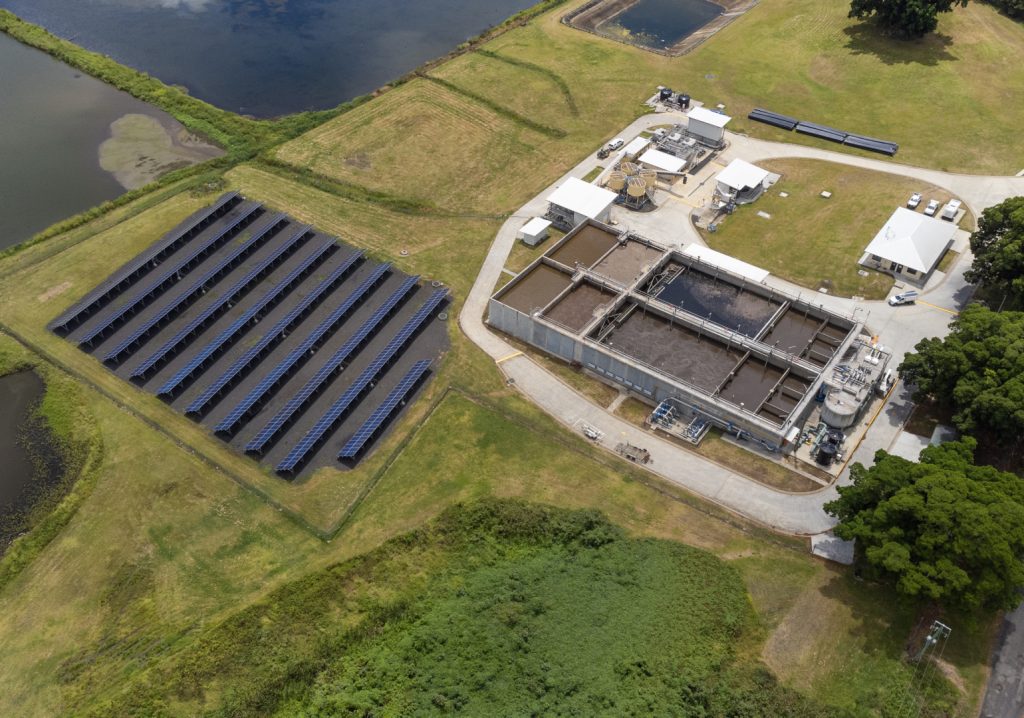SA Water’s Zero Cost Energy Future Program has seen the installation of over 360,000 solar panels and 34 megawatt hours of battery storage across the state.
The initiative, which was introduced in 2020 and was a finalist at the Engineers Australia Excellence Awards in 2022, is designed to enhance the state’s electrical capacity, drive commercial and marketability outcomes for SA Water, and improve service delivery for South Australians.
“SA Water is one of the largest users of electricity within South Australia, and actually the second largest consumer of electricity among water utilities across Australia,” Nicola Murphy, General Manager of Science and Strategy at SA Water, told create. “In 2021-2022, the state’s operating electricity bill reached approximately $74 million.”
The high demand is compounded by South Australia being the driest of all Australian states.
“Add to that the fact that electricity is one of the challenges faced by the industry in terms of getting to a zero net emissions target – and we need to look at every possible opportunity to reduce the cost of electricity,” she said.
As part of the program’s rollout, more than 360,000 solar panels were installed and energised.
“They are designed to generate more than 240 gigawatt hours of energy per annum,” Murphy observed. “And that’s partnered with 34 megawatt hours of battery storage across 33 of our operational locations across the state.”
The gateway process for deciding on location, Murphy says, was strict to ensure the economic viability of each installation.
“Originally we looked at 90 sites, which soon came down to 70, and we finally installed 33,” she said. “We actually found that fewer larger installations was more economically viable than having twice as many installations, which would mean we’d have to pay a lot of money for network augmentation.”
Although it has been a few years since installation, the program is seen as open rather than finite.
“We’re now in a process of really optimising that generation and all load as far as we can,” Murphy said.
[embedyt] https://www.youtube.com/watch?v=ZqA3–nt3vg[/embedyt]
650,000 human hours
The Zero Cost Energy Future Program has been recognised for excellence in design and impact, including as a finalist at the Engineers Australia Excellence Awards.
“It was important that this initiative receive that recognition – not necessarily just for SA Water, but for the water industry more broadly,” Murphy noted. “It’s also important for our environment.”
“[We should do] anything that we can do to help share the information and the lessons that we’ve learned so that others can successfully move to a zero net emissions and renewable future.”
Murphy also credits the hardworking project team as key to the project’s success and recognition.
“We’ve had over 650,000 hours of people effort go into this program. That’s more than the number of solar panels! So it’s been a huge effort,” she added.
The initiative, which Murphy suggests is equivalent to planting more than 7 million trees or removing 32,000 cars from the roads each year for every year of operation, has seen an investment of more than $400 million.
“But it all started with a very small team – there were originally just five people who came together to identify innovative responses to increasing prices and volatility on the spot market,” she said.
Murphy said the thread of innovation has run throughout the project from its very start.
“We knew we needed to do something that was radically different to what we had been doing over the previous decade.”
The new and improved Engineers Australia Excellence Awards are now open for nomination. Learn more about the awards program and how to nominate here.
